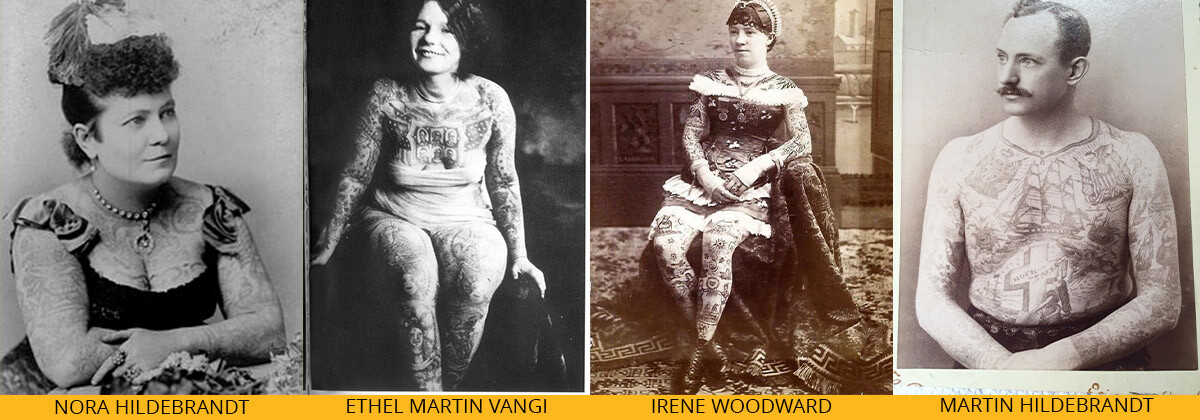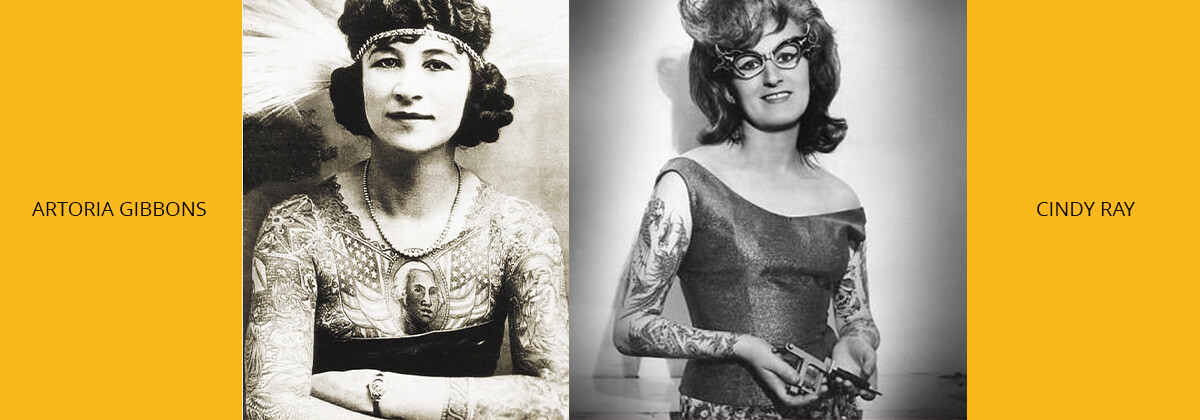Tattoo history: The tattooed ladies

Tattoos have a long history and tradition. So it's no surprise that there are also a few curious stories about tattoos. We'll tell you exactly what they are now!
HISTORY
Even though large tattoos on women are quite normal for us today, in the 1890s it was an extremely rare sight or a spectacular event to see such a tattooed woman.
Incidentally, the whole thing originated in so-called freak shows in which the Carnival Ladies appeared. These were tattooed women who presented their tattoos in a circus.
One of these early tattooed women was the British-born Nora Hildebrandt, who was tattooed by the German sailor, tattooist and later life partner Martin Hildebrandt. Martin Hildebrandt made a name for himself by tattooing some of the earliest tattooed attractions, which was created for Bunnell's Dime Museum.
Nora was soon replaced by Irene Woodward, as she was prettier according to the management at the time.
At the time, there was a real competition among the tattoo artists practising in New York to see who could "produce" the first tattooed lady. It is therefore not entirely clear who tattooed Irene. It may have been tattooist and sailor Martin Hildebrandt, as was the case with Nora Hildebrandt.
Both ladies travelled extensively throughout the USA with the circus during their careers. On average, they earned around 100 to 200 dollars per week, far more than the average working man or woman. At that time, they earned just 5 to 12 dollars a week.
Considering that women's rights were only just becoming a pressing issue at the end of the 19th century, the two women were blessed with high wages and more social freedoms. Nora and Irene's unusual careers created new job opportunities for working class women and they were also among the first free-thinking female figures of the time period.

THE 1930S
From 1938, they were then placed in sanatoriums and nursing homes as human abnormalities and became part of the Nazi "euthanasia" programme. At the time, Siamese twins, contortionists and tattooed women were considered abnormalities by the Nazis and had to be ostracised.
THE 1950S AND LATER YEARS
From the 1950s onwards, the business collapsed for many artists and tattooed ladies. Circus shows and cheap museums went out of fashion.
Tattoos were now stigmatised again due to their long association with criminal activity.
Among the last women to perform overseas were Artoria Gibbons and Cindy Ray. Artoria Gibbons had 80% of her body covered in tattoos, some of which imitated paintings by Raphael or Michelangelo.
After the demise of tattooed women in the 1940s and 1950s, women's lives were heavily dominated by men. For women in particular, it was considered antisocial or even indecent to have a tattoo. In addition, women in the patriarchal USA had to bend to the will of their male environment. Be it the husband, father or partner. The male part decided over the woman's body and so the judgement on a female tattoo request was usually: "Nice girls don't get a tattoo". At that time, many tattoo artists also refused to tattoo a woman because they feared violence or conflict with their partner or father. Women who did get tattoos back then were almost exclusively women from the lower working class or homosexuals.

What used to be labelled as unusual or abnormal under the Nazis is normal for us today. Tattooing has a long and fascinating history and we will continue to bring you more of these stories in the future.

 German
German Dutch
Dutch